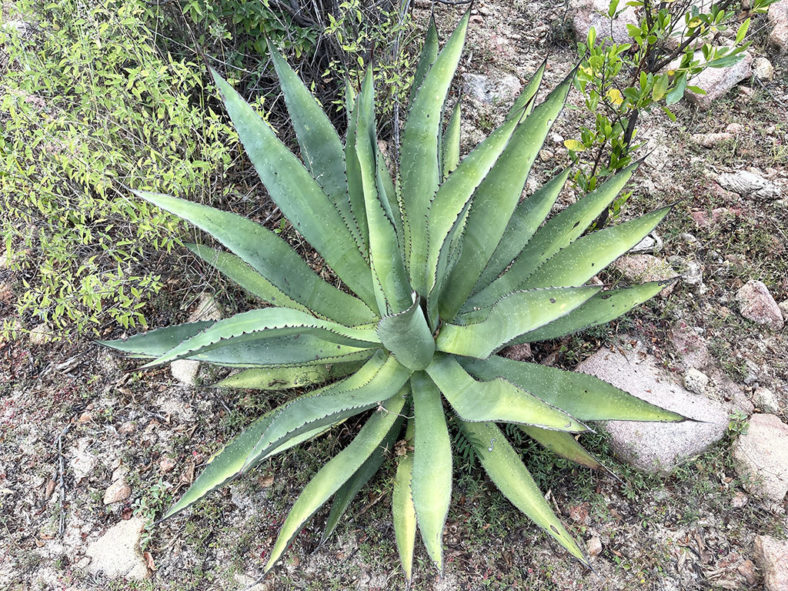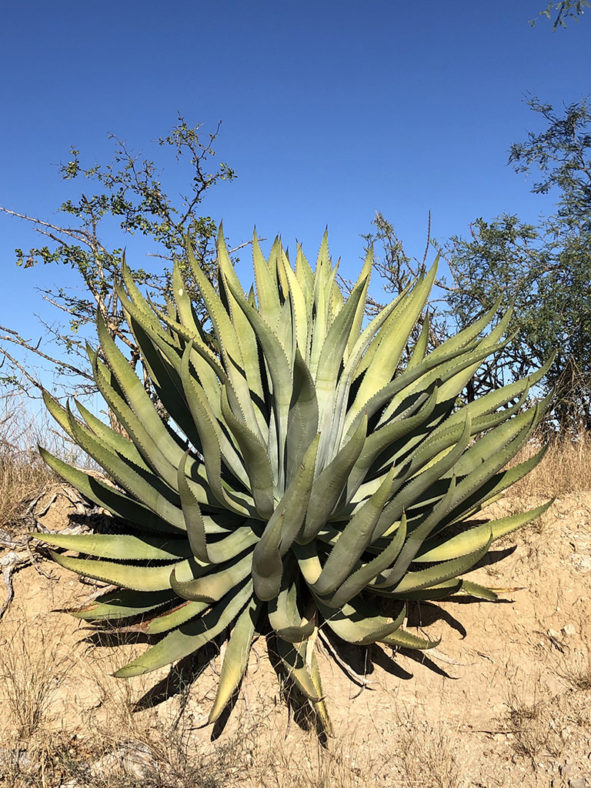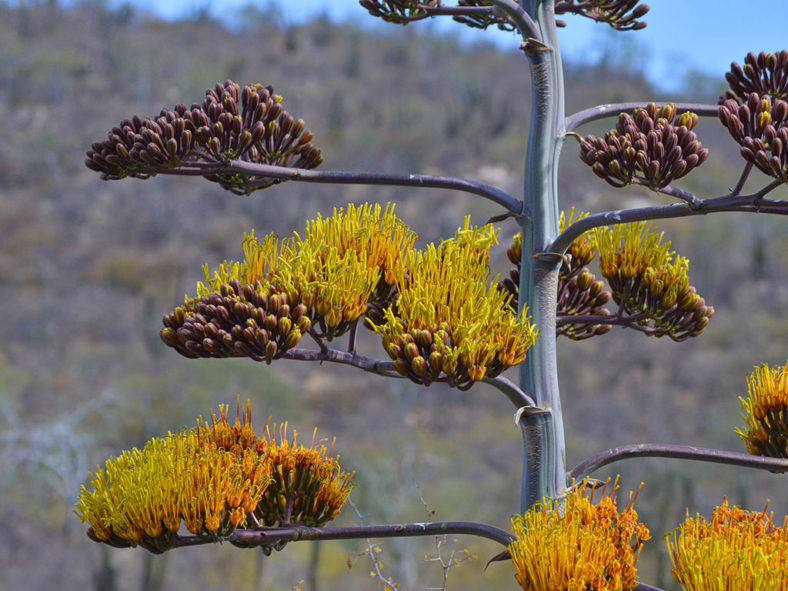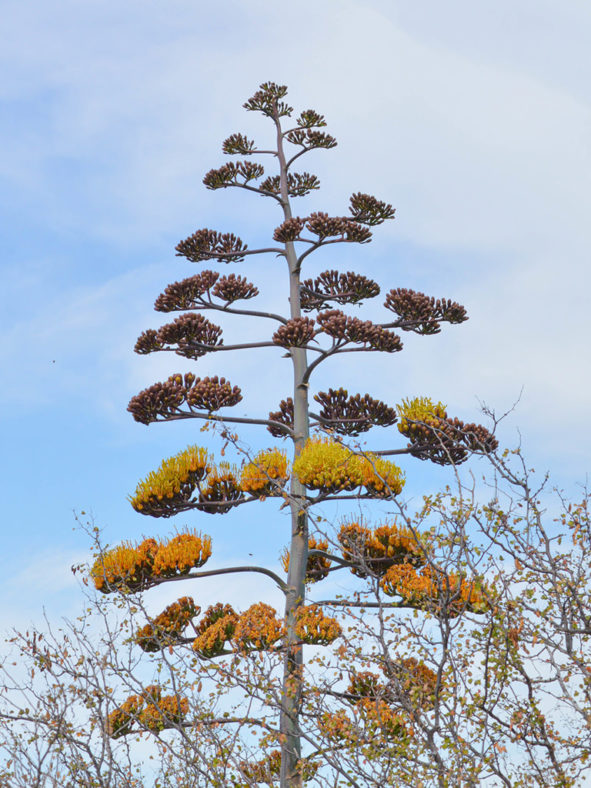Scientific Name
Agave aurea Brandegee
Common Name(s)
Baja California Sur Century Agave
Synonym(s)
Agave aurea var. aurea
Scientific Classification
Family: Asparagaceae
Subfamily: Agavoideae
Genus: Agave
Etymology
The specific epithet "aurea" (pronounced "AW-re-uh") means "made of gold, golden, gold-colored" and refers to the color of the flowers.
Origin
Agave aurea is native to Mexico. It occurs from the west slopes of the Sierra de la Giganta to the Sierra la Laguna in Baja California Sur.
Description
Agave aurea is a succulent plant that forms a solitary, short-stemmed rosette of gracefully arching, yellow-green to green leaves. The rosette can grow up to 4 feet (1.2 m) tall and 6.6 feet (2 m) in diameter. The leaves are linear to lanceolate with regularly spaced brown spines along the straight to undulate margins and a dark brown or grayish-red terminal spine. They can measure up to 3.6 feet (1.1 m) long and 4.8 inches (12 cm) wide. The terminal spine can grow up to 1.4 inches (3.5 cm) long.
The flowers are bell-shaped, red to purplish in bud, becoming yellow to orange-yellow when open, and can reach up to 2.8 inches (7 cm) in length. They appear in congested umbels in inflorescence with lateral peduncles, usually in spring. The inflorescence can grow up to 16.4 feet (5 m) tall. The fruits are three-chambered capsules that contain black seeds.

How to Grow and Care for Agave aurea
Light: Like all Agaves, this plant requires full sun to partial shade. If growing A. aurea indoors, choose a bright, sunny window with as much sun as possible. From spring to fall, it loves going outside.
Soil: A. aurea tolerates most soils with good drainage, but it prefers sandy or rocky soil.
Temperature: During the growing season, it likes warm temperatures, while in winter, when resting, this succulent enjoys cooler temperatures. A. aurea can withstand temperatures as low as 25 °F (-3.9 °C). USDA Plant Hardiness Zones 9b to 11b, 25 to 50 °F (-3.9 to 10 °C).
Watering: From spring to fall, water thoroughly when the soil becomes dry. In winter, water sparingly about once a month. Plants in containers require more frequent watering than those in the ground.
Fertilizing: Give your A. aurea a small amount of fertilizer in the spring during the first two years. After that, established plants seem to take care of themselves.
Repotting: If you notice your A. aurea becoming pot-bound, repot it with fresh soil in a pot slightly larger than the old one. Give the plant a week or so to readjust before you water it again.
Propagation: Since a plant with a solitary growth habit, A. aurea can be propagated only from seeds.
Learn more at How to Grow and Care for Agave.
Toxicity of Agave aurea
A. aurea is not toxic to humans but may be mildly poisonous to children and pets.
Links
- Back to genus Agave
- Succupedia: Browse succulents by Scientific Name, Common Name, Genus, Family, USDA Hardiness Zone, Origin, or cacti by Genus
Photo Gallery
Click on a photo to see a larger version.


